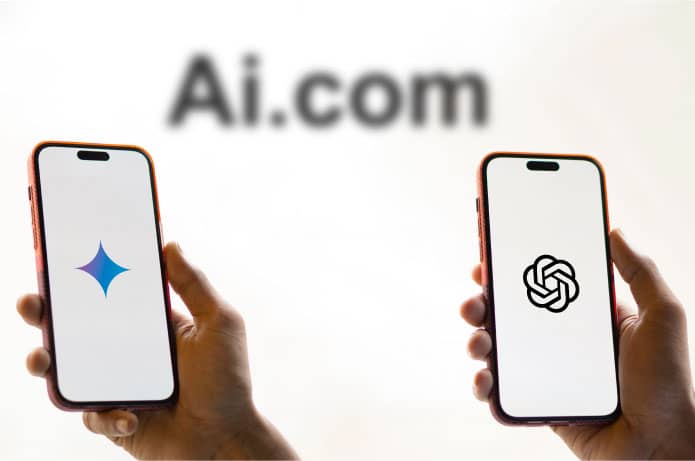The idea ofartificial intelligence(AI) is not new, but recent advances in related technologies have turned it into a tool used by all of us daily.The growing importance and proliferation of AI are both exciting and potentially alarming, as the foundations of many AI platforms and resources are essentially black boxes controlled by a small number of powerful corporations.
Large organizations like Red Hat believe thateveryone should have the ability to contribute to AI. Innovation in AI should not be restricted to companies that can afford massive amounts of processing power and the data scientists needed to train those machines.large language models(LLMs)
Instead, decades of open-source experience in software development and collaboration with communities enable everyone to contribute and benefit from AI, while helping to shape a future that meets our needs. There is no doubt that an open source approach is the only way to realize the full potential of AI, making it safer, more accessible, and democratized.
What is open source?
Although the term "open source" originally refers to a software development methodology, it has expanded to encompass a more general form of work that is open, decentralized, and deeply collaborative. The open source movement now goes far beyond the world of software, andthe open source wayhas been embraced by collaborative efforts around the world, including sectors such as science, education, government, manufacturing, healthcare, and more.
Open source culture has somefundamental principles and valuesthat make it effective and meaningful, for example:
- Collaborative participation
- Shared responsibility
- Open exchanges
- Meritocracy and inclusion
- Community-driven development
- Open collaboration
- Self-organization
- Respect and reciprocity
When open source principles form the basis of collaborative efforts, history shows that incredible things are possible. Some important examples range from the development and proliferation of theLinuxas the world's most powerful and ubiquitous operating system until the emergence and growth ofKubernetesand containers, in addition to the development and expansion of the Internet itself.
Six advantages of open source in the age of AI
There are numerous benefits to developing technologies through open source, but six advantages stand out among the others.
1. Increased speed of innovation
When technology is developed collaboratively and openly, innovation and discovery can happen much more quickly, unlike closed organizations and proprietary solutions.
When work is openly shared and others have the ability to build upon it, teams save a huge amount of time and effort because they don't have to start from scratch. New ideas can expand the projects that came before. This not only saves time and money, but also strengthens results because more people work together to solve problems, shareinsightsand review each other's work.
A broader and more collaborative community is simply able to achieve more: promoting people and connecting expertise to solve complex problems and innovate more quickly and effectively than small, isolated groups.
2. Democratize access
Open source also democratizes access to new AI technologies. When research, codes, and tools are openly shared, it helps to eliminate some of the barriers that normally limit access to cutting-edge innovations.
THEInstructLabIt's a great example of this premise. The initiative is an independent open-source AI model project that simplifies the process of contributing skills and knowledge to LLMs. The goal of the effort is to allow anyone to help shape theGenerative AI(gen AI), including those that do not have the skills and training in data science normally required. This allows more individuals and organizations to contribute to the training and refinement of LLMs reliably.
3. Enhanced security and privacy
Because open source projects lower the barriers to entry, a larger and more diverse group of contributors is able to help identify and address potential security challenges present in AI models as they are being developed.
Most of the data and methods used to train and tune AI models are closed and maintained by proprietary logic. Rarely do outsiders manage to gain any insight into how these algorithms work and whether they harbor any potentially dangerous data or inherent biases.
If a model and the data used to train it are open, however, anyone interested will be able to examine them, reducing security risks and minimizing platform biases.Additionally, open philosophy contributors can create tools and processes to track and audit the future development of models and applications, allowing for monitoring the development of different solutions.
This openness and transparency alsogenerate trustsince users have the ability to directly examine how their data is being used and processed, so they can verify if their privacy and data sovereignty are being respected. Furthermore, companies can also protect their private, confidential, or proprietary information by using open source projects like InstructLab to create their own fine-tuned models, over which they maintain strict control.
4. Provides flexibility and freedom of choice
While monolithic, proprietary, black-box LLMs are what most people see and think about when it comes to generative AI, we are starting to see a growing push towards smaller, independent, purpose-built AI models.
Thosesmall language models(SLMs) are typically trained on much smaller datasets to give them their basic functionality, and are then further tailored for specific use cases with domain-specific data and knowledge.
These SLMs are significantly more efficient than their larger counterparts, and have demonstrated such good (if not better) performance when used for their intended purpose. They are faster and more efficient to train and deploy, and can be customized and adapted as needed.
And it is largely for this reason that the InstructLab project was created. With it, you can take a smaller open-source AI model and expand it with the data and additional training you desire.
For example, you can use InstructLab to create a customer service chatbot that is highly tailored and developed for a specific purpose, enhancing best practices within the organization. This practice allows you to provide the best of your customer service experience to everyone, everywhere, in real time.
Most importantly, this allows you to avoid vendor lock-in and provides flexibility in terms of where and how you deploy your AI model and any applications built on top of it.
5. Enables a vibrant ecosystem
In the open community, “no one innovates alone, and this belief has persisted since the early months of the community's founding.
This idea will remain valid in the era of AI within Red Hat, a leader in open solutions, which will provide several open source tools and frameworks in the form of theRed Hat AI, a solution with which partners will generate more value for end customers.
A single supplier cannot provide everything an organization needs, or even keep up with the current pace of technological evolution. The principles and practices of open source accelerate innovation and enable a vibrant ecosystem by fostering partnerships and collaboration opportunities between projects and industries.
6. Reduce costs
In early 2025,estimate-it-isThe average base salary for a data scientist in the United States is over $125,000, with more experienced data scientists able to earn significantly more.
There is clearly a huge and growing demand for AI-powered data scientists, but few companies have much hope of attracting and retaining the specialized talent they need.
And really large LLMs are exorbitantly expensive to build, train, maintain, and deploy, requiring entire warehouses full of highly optimized (and very expensive) computing equipment and massive amounts of storage.
Open, smaller, and purpose-built AI models are significantly more efficient for building, training, and deploying. They not only require a fraction of the computing power of LLMs, but projects like InstructLab enable people without specialized skills and experience to actively and effectively contribute to the training and fine-tuning of AI models.
Clearly, the cost savings and flexibility that open source brings to AI development are beneficial to small and medium-sized businesses hoping to gain a competitive advantage from the applications AI can bring.
In summary
To build a democratic and open AI, it is crucial to use the open source principles that made cloud computing, the internet, Linux and so many other open, powerful and profoundly innovative technologies possible.
This is the path that Red Hat is following to enable AI and other related tools. Everyone should benefit from the development of artificial intelligence, so everyone should be able to help determine and shape its trajectory, and contribute to its development. Collaborative innovation and open source are not essential or unavoidable for the future of the discipline.











